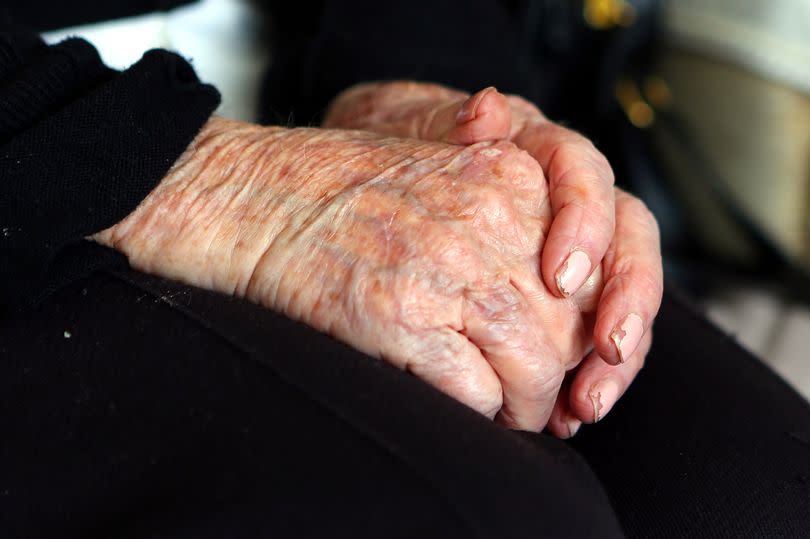Worst areas of Yorkshire for people dying when it could be prevented

Kirklees has a higher level of avoidable deaths than the average in the Yorkshire and The Humber region.
Nearly a quarter of all deaths across England and Wales in 2022 were considered avoidable, according to data from the Office for National Statistics (ONS). The King's Fund think tank added that avoidable ill health has "devastating consequences for individuals, families, communities and the economy".
An avoidable death is a death caused by either preventable or treatable health conditions for those aged below 75. Many of these deaths can be avoided through proper healthcare and timely medical interventions.
Read More: Huddersfield cafe's owner says 'pernicious people' putting £50,000 investment in peril
On average, in Yorkshire and The Humber, there were 284 avoidable deaths per 100,000 people between 2020 and 2022. There were 11,200 avoidable deaths in South Yorkshire over the same period, with 68% considered preventable, and there were 17,534 avoidable deaths in West Yorkshire, with 69% considered preventable.
Meanwhile, there were 2,450 avoidable deaths in the East Riding, with 64% of these considered preventable. North Yorkshire saw 4,135 avoidable deaths, with 66% considered preventable.
Here are the statistics for each region in Yorkshire, compared with the number of avoidable deaths in the period 2017 to 2019, before the Covid-19 pandemic.
Barnsley: 337 per 100,000, up from 277
Bradford: 330 per 100,000, up from 276
Calderdale: 293 per 100,000, up from 260
Doncaster: 323 per 100,000, up from 274
East Yorkshire: 218 per 100,000 up from 201
Hull: 391 per 100,000, up from 342
Kirklees: 296 per 100,000, up from 258
Leeds: 275 per 100,000, up from 263
North Yorkshire: 210 per 100,000, up from 200
Rotherham: 325 per 100,000, up from 279
Sheffield: 279 per 100,000, up from 244
Wakefield: 317 per 100,000, up from 283
York: 237 per 100,000, up from 217
The North West had the highest regional average, at 310 per 100,000 and 61,503 overall. The South West was the region with the fewest avoidable deaths, with 211 per 100,000.
Veena Raleigh, senior fellow at the King’s Fund, said: "The cut in public health budgets of one-quarter since 2015-16, which fell most heavily on people living in the most deprived areas of England, illustrates governmental failure to adequately prioritise improving health and preventing illness in areas where people have the poorest health.
"Healthcare services in the UK are also under-resourced compared with international peers and key health outcomes are worse – a powerful testimony that the UK is doing poorly also on treating people."
There has been a slight decrease in the proportion of overall deaths being considered avoidable. In 2021, 24% were considered avoidable compared with 22% in 2022.
Kathryn Marszalek, senior analytical manager at the Health Foundation, said: "While avoidable mortality rates have fallen since 2021, they are still higher than pre-pandemic levels.
Get all the latest and breaking news in Yorkshire by signing up to our newsletter here.
"However, this will still include the many Covid deaths in 2022."
Cancer remains the leading cause of avoidable mortality in 2022, but has continued to decline since 2001, while the mortality rate for alcohol-related and drug-related deaths has increased.
Ms Marszalek said: "The next government faces an uphill challenge in improving the population's health and reducing inequalities.
"Improving health needs long-term cross-government action ranging from ensuring good-quality jobs and housing to investing in wider public services and ensuring that everyone has equitable access to health care services."
In addition, men saw a higher rate of avoidable deaths in every area across the country.
Ms Raleigh said without a significant focus on improving the nation's wellbeing, political aspirations for economic growth are unlikely to be realised.
"Preventing ill-health and reducing premature deaths is surely one of the biggest challenges of our age, and while political parties have set out some measures to improve public health such as committing to a smokefree generation, none of them match the scale of reform needed to bring about serious change," she added.

 Yahoo News
Yahoo News 
